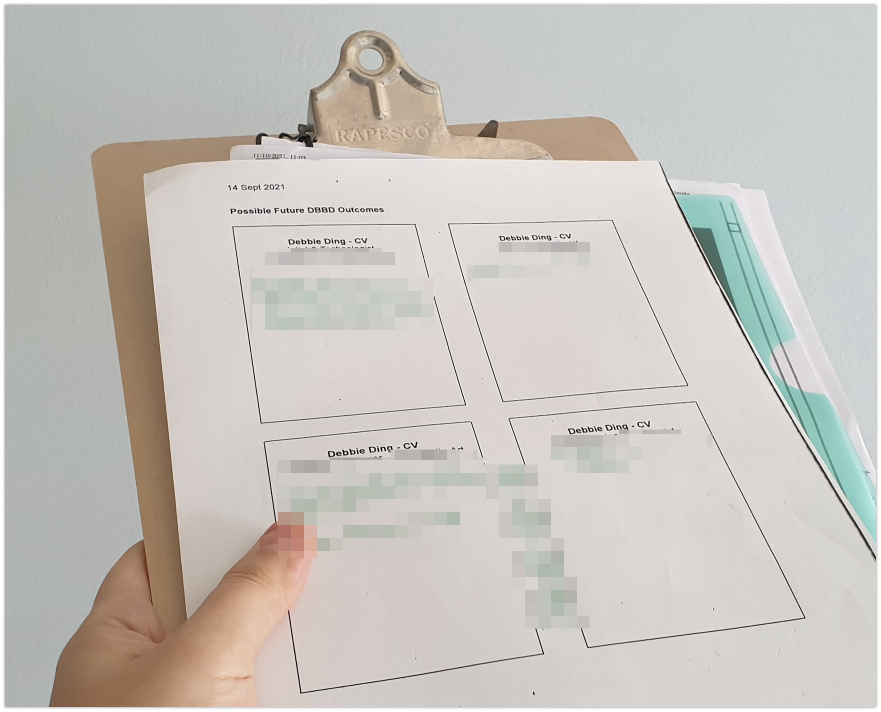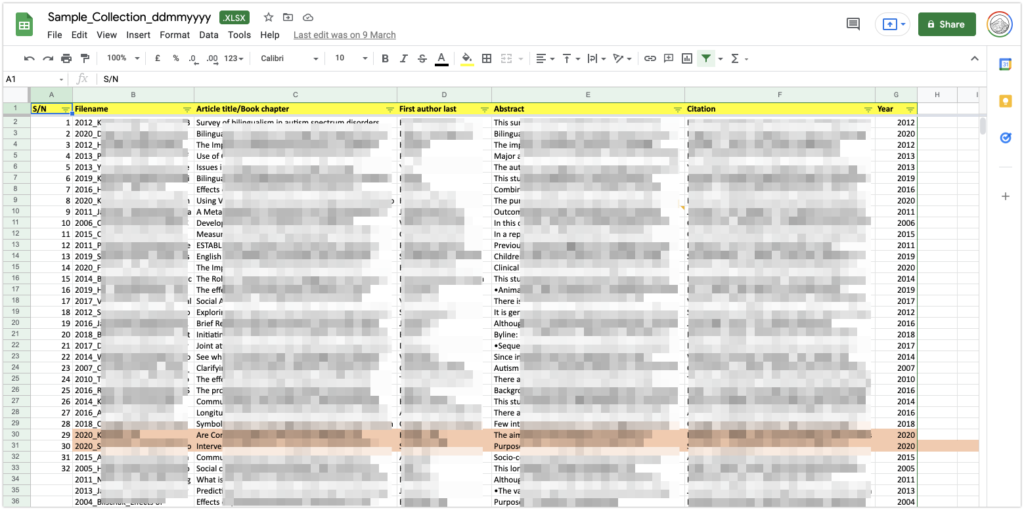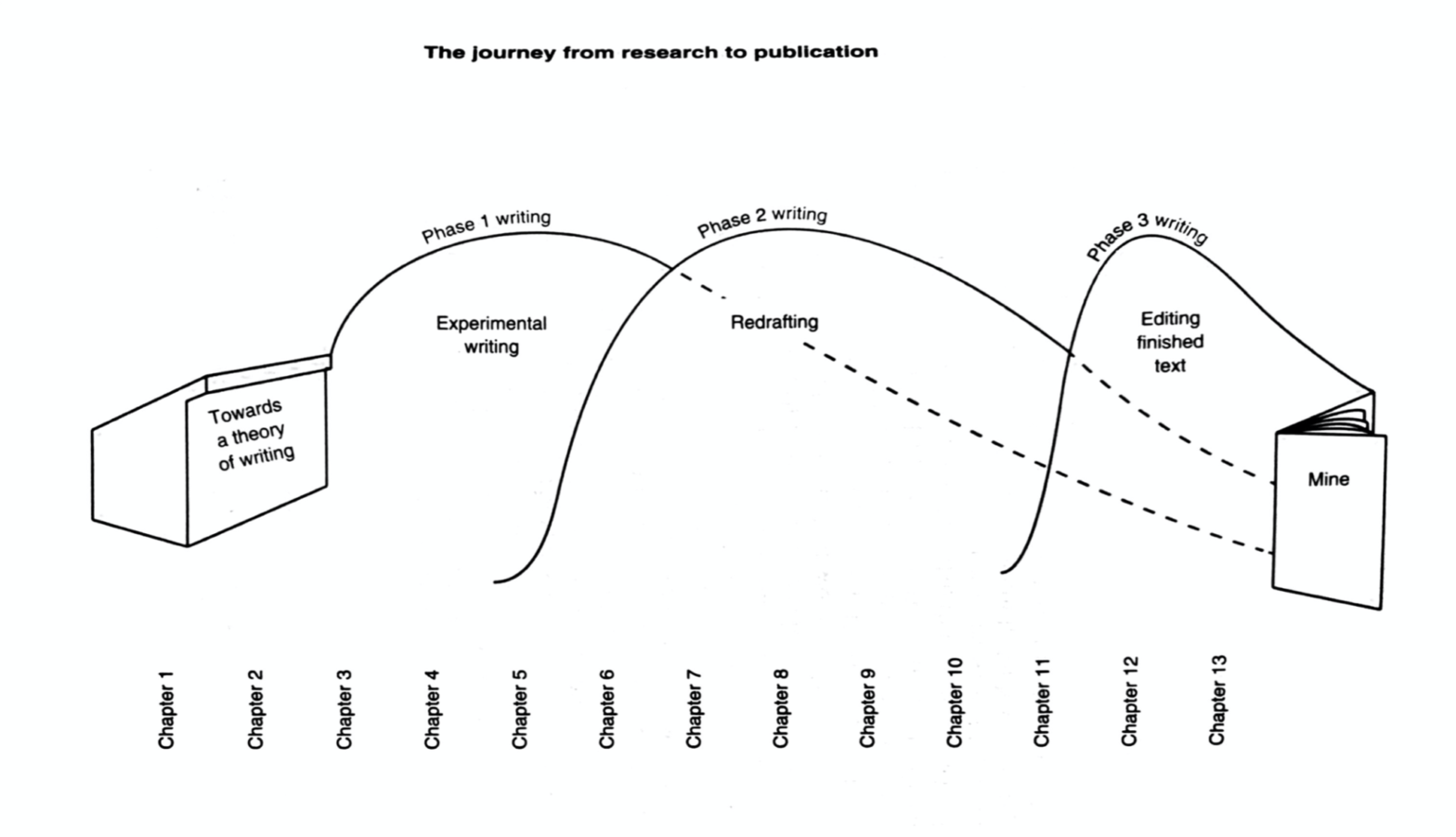
The Evolution of my PhD Proposal
debbie ding
- 1
- 191
I have been a full-time educator for the last 4+ years and I tried to get into Educational Research for the last 2 years. I had completed a Specialist Diploma in Teaching & Learning, and so I thought that pursuing an educational research project would be a “fun idea”.
Looking back, I really didn’t understand what I was getting into. It wasn’t like writing an essay for an English Literature or Philosophy class (something I still feel closer to, perhaps because my BA was in English Literature). This was a world where simple words like “engagement” already had their own meaning (a little seperate from what the word would mean to the layperson). Every simple word you chose would come with its own history of usage and meaning. The Educational Research world was also a world of Cronbach’s alphas, Kuder–richardson formulas, psychometric tests and… SPSS. And I couldn’t just come up with my own measures, there was already a bewildering world of measures and rating scales existing for everything. In fact, I was told that the act of designing a measurement or rating scale for something could be a paper or research project in itself. And did I mention that my dislike for statistics was the reason why I opted to drop Psychology as an undergraduate major?…
Anyway. I know now that I do not want to specialise in Educational Research (*insert the biggest ever sweatdrop*). But the effort is not wasted, because it made me realise that I still do want to do research! – but of some other kind…
Here’s a honest timeline of what happened:
| Date | Timeline of My Attempt to get into Educational Research |
| Dec 2019 | Started work on 2020 ███-███ Grant Proposal |
| Jan 2020 | Internal Deadline for 2020 ███-███ Grant Proposal Followed by several rounds of internal presentations |
| July 2020 | Submission of 2020 ███-███ Grant Application |
| Jan 2021 | Started work on 2021 ███-███ Grant Proposal (Whilst not knowing the outcome of the previous year) |
| Feb 2021 | Results announced for 2020 ███-███ Grant Internal Deadline for 2021 ███-███ Grant Proposal Followed by several rounds of internal presentations |
| June 2021 | Submission of 2021 ███-███ Grant Application |
| Mar 2022 | Results announced for 2021 ███-███ Grant |
From the table, you can see that the endeavour required me to spend 7 months toiling on a proposal and another 7 months waiting to hear back on the results, which was time during which I couldn’t really embark on the proposed project either. From start to finish, I had spent 1 year 2 months on an (unsuccessful) educational research proposal. TWICE.

With such a punishing and depressing timeline, it does seem almost illogical that I repeated this cycle twice. This wasn’t a workplace goal set for me by someone else. This was entirely a self-initiated endeavour. I suppose I simply continued because I saw the value in the writing exercise of creating a research proposal. It was the tantalising dream to write a workplace project into being. To have writing as a main part of my job alongside teaching…
Through my workplace’s Teaching and Learning Development Centre, I had done a 1-on-1 consultation with a very lovely Pearson researcher who walked me through on how to conduct a literature review, and what I learnt after that was that I really had to read a whole lot more, and to seriously organise the readings through spreadsheets and folders so I could easily access them once again.
Looking soberly at my past artistic research proposals… There was very little rigour or order in my previous desultory methods of “research”. What I had called my “artistic research” in the past – it had nothing on this level! I needed to “level up” my artistic research game and get organised and READ A WHOLE LOT MORE.

The researcher gave me the surprising advice (shocking to me) that if I was serious about research, I might even want to set aside a budget for purchasing academic papers. I asked her instead whether it was advisable for me to write to researchers to ask them for a copy of their paper if I found it trapped behind a paywall. After all, if the research is publicly funded, the public should have access to the knowledge. But I guess the topic of access to knowledge and academic paywalls is worth another post in itself…

Making a Mindmap: Earlier in the year, I also made a little silly mindmap to convince myself of the position I take with regards to practice-based PhDs (inserted here for archival purposes, but I am sure I will cringe if I look at it closely in time to come).
Harriet Hawkins’s “Geography, Art, Research: Artistic Research in the GeoHumanities” had a big impact on me. I also read several papers from the European perspective where PhD-Making is regarded as art practice. I think writing down about my thoughts about the professionalisation and academisation of art could also be saved for another post. But I have no illusions that the point of doing a PhD is to really work in academia as a researcher, writer, and as an educator in a university.
Possible “CV Futures”: Oh and another weird exercise I did was that I made 4 different CV cover sheets with different possible future job titles and then I printed them out. I held the CV covers in my hands and tried to imagine which CV felt the best to me. The answer was clear. I still wanted to do the PhD. (Dingfather said to me, “when you told me for the umpteenth time in several years that you wanted to do the PhD, I said, just go and do it then…”)

Practice-based VS Practice-Led: One more distinction that also needs making is between the term “practice-based research” and “practice-led research”. Candy and Edmonds’s distinction is useful here. Considering the tenuous relationship my work has with its materiality, I don’t think of my artwork as the contribution to knowledge (honestly, it feels like only a meglomaniac would say that, you’d need a big ego to flex that), but I do believe that my research results in new knowledge and understandings about the mysterious artistic process.
- Practice-based: if a creative artifact is the basis of the contribution to knowledge
- Practice-led: if the research leads to new understandings about practice
Finally, here’s the account of how my initial PhD proposal evolved in the last month – from screenshot aesthetics > to aesthetics of disruption > to virtual reality as cartography (and some of my underlying thoughts about the strategy for writing):
[#1: A Cultural History of Screenshot Aesthetics?] At first I tried to think of broad topics that interested me. I started by thinking about the visual mediums which interested me, which led me to screenshots and how so many works I like are actually screen captures of some kind although sometimes we don’t necessarily distinguish “screenshots” being a specific medium. Having had a day-job in teaching UI and UX design, the screenshot and UI is something I invariably think about alot of (in fact, the basis for this very blog post is kinda like the accumulation of screenshots I have as evidence of my PhD application journey), so I thought it would be an good convergence point to try to write a “cultural history of the screenshot”, in the vein of Sean F. Johnston’s inspirational account of the cultural history of the holograph. But a glaring issue was that if you asked me to define the types of screenshot works I wanted to study, I struggled to define what would be those significant works.
[#2: The Aesthetics of Temporal Disruption & Spatial Discontinuity?] I had some more interesting conversations about screenshots which pointed to the fact that what interested me about them was the potential disruption or breaking of the fourth wall. Last year when I went to visit Lourdes’ amazing show at Helutrans, I spent all my time looking at her amazing collection of lightboxes and thinking about how the work is presented; likewise when I see any digital work today I am always looking for the clue that tells me how it is made. Is there any part of the interface left behind that belies the process through which the virtual or digital image is constructed? This seems conceptually interesting but also potentially a minefield where I might struggle to define “Disruption” and “Discontinuity” in a truly meaningful and consistent way across different disciplines. (Do not like the fact that it is loaded in other meanings in other fields, eg: “disruptive technology“) The terms felt potentially woolly, and a major problem is that I would struggle to list the most representative works for this topic.
[#3: Virtual Reality as Cartography?] So I decided what i had to do instead was to reverse engineer it from the kinds of works I was super big on at the moment. What am I big on? Well… THIS? and THIS? And this brought me to something a lot closer to heart with my work. I thought about how I love walking around in Second Life, how I love playing Sims, and how I think of walking around in virtual worlds as an extension of the practice of being a flaneur. So I thought, why not research into whether virtual reality and world-building can constitute a kind of cartography and map-making, by which I mean it produces geographical knowledge? This makes so much sense in relation to my history of making works about psychogeography. (and it explains my “genesis work”: DREAM SYNTAX) And so, this is what I submitted as a PhD proposal…
Here is a record of the timeline of my PhD Application process:
| Date | Progress |
| Dec 2020 | Attended Public Service Career Consultation. Felt a very significant amount of cognitive dissonance because I realised that I aspired to be a “Subject” Specialist and not a T&L Specialist. |
| Jan 2021 | Researched into Design/HCI PhD Programmes. Decided that Design/HCI research is not what I want to do. |
| Feb 2021 | Reviewed my previous 2016 PhD application for Art Practice PhD. Many improvements could have been made, research methodology unclear and did not know how to do a proper literature review at that point. Researched on Practice-based Phds. |
| Mar 2021 | Wrote Educational Research Proposal and applied for Educational Research Grant. |
| Jun 2021 | Graduated from Specialist Diploma in Teaching & Learning. Felt strongly that Educational Research is not what I want to do. Researched into Art Practice PhDs around the world. |
| Jul 2021 | Considered applying to USC iMAP, drew up table on financial feasibility. Decided that US student visa would be a serious constraint and cost of childcare would be prohibitive. |
| Sep 2021 | On leave during Term Break. Wrote 1st Draft of PhD Proposal and Statement of Purpose. |
| 1 Oct 2021 | Contacted potential supervisors with first draft |
| 4 Oct 2021 | Contacted Academic References |
| 8 Oct 2021 | Submission of Formal Application |
| Oct 2021 | Writing 2nd and 3rd Draft of PhD Proposal and approaching potential supervisors with drafts |
| 29 Oct 2021 | All References submitted. Submission complete. In-principle agreement from potential supervisor [Application deadline for early offer was 15 Nov 2021] |
| Late Mar 2022 | Offer received for ADM PhD programme and NTU Research Scholarship. |


Hi Debbie, congrats for your PhD!
I’m Fadilah (she/her) from Jakarta, I just stumbled upon your blog and really love it! I like how you’re being vulnerable and honest in your process.
I tried to contacting you via twitter but it seems the button doesn’t work in your website, hence here I am writing this comment. I’m also working on my PhD proposal, and this post makes me realise, wow I still have a long long way to go! I’m a designer (generalist) and also teach part time in a local uni. I fall in love with VR, and recently working on a VR project on Unity. Your VR projects are cool!
If you have time, would it be possible for me to discuss some PhD matters with you? If not, that’s totally fine.
I have a plan to visit Singapore at the end of this year. Please let me know if you have any exhibition during that time, I’d like to check it out 🙂
Thank you and have a good day!